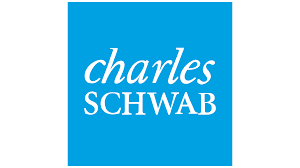NumPy Tutorial
Learn one of the most important libraries of Python Programming – Numpy through our free Numpy tutorial. Understand scalar functions, mathematical operations, arrays, joins, intersection, and matrix calculations.
What you learn in NumPy Tutorial ?
About this Free Certificate Course
The course will introduce you to Numpy basics with a few examples. You will understand how you can use Numpy in Python programming. Next, you will learn about its various mathematical functions such as sum, subtract, multiply, and divide. Later, you will get familiar with the scalar functions of Numpy, wherein you will comprehend arrays of two different dimensions, such as a single and multi-dimensional array. Moving ahead with the tutorial, you will be introduced to Numpy operations, including the joining of arrays, intersection, and the difference between arrays. In addition, you will also learn Numpy Matrix calculations, mainly the multiplication of elements in the matrix.
Are you ready to upskill yourself than Numpy? Great Learning offers a highly professional Artificial Intelligence and Machine Learning program that covers every skill you need to become an accomplished Python Developer.
Course Outline
In the first chapter of the tutorial, you will understand Numpy in detail. You will also learn to create different arrays using Numpy. Next, you will be familiarized with various implementations of Numpy arrays with examples using Jupyter Notebook.
The next module will help you to identify the shapes of Numpy arrays. Later, you will see multiple options for joining Numpy arrays. Lastly, you will learn the implementation of Numpy intersections and differences with the help of the Jupyter Notebook.
Later, you will be introduced to some common calculations done with Numpy arrays. The tutor will give you examples of adding Numpy arrays and also brief you on the scalar operations of arrays. Lastly, you will understand how you can use mean, std, and median functions for Numpy arrays.
In the last module, the tutor will conceptualize you with the Numpy Matrix and how you can access specific elements of the matrix. next, you will learn to perform matrix multiplication on Numpy arrays. Lastly, you will understand how to save the created array and load it after saving.
Our course instructor

Mr. Bharani Akella
Data Scientist
With this course, you get
Free lifetime access
Learn anytime, anywhere
Completion Certificate
Stand out to your professional network
1.0 Hours
of self-paced video lectures
Frequently Asked Questions
What are the prerequisites required to learn this Numpy Tutorial?
Learning from this course doesn’t require any prerequisites such that any learner can enroll and start this course without any hustle.
How long does it take to complete this free Numpy Tutorial?
The course contains one hour of video content that you can study at your own pace. The courses provided by Great Learning Academy are self-placed, and any learner can finish them anytime.
Will I have lifetime access to the free course?
Yes, the course comes with lifetime access. So, you can revisit the course anytime you feel like revising your knowledge.
What are my next learning options after this Numpy Tutorial?
Once you finish this course and you decide to build your career in this domain, you can opt for the Great Learning’s Machine Learning course that will give you advanced learning and implementation of Numpy and other concepts. With this paid course, you will learn the advanced level skills of Domain and also get a course certificate at the end.
Is it worth learning Numpy?
Numpy is an important library of Python programming language which has many useful applications, including Machine Learning, statistics, data science, bioinformatics, and data analytics. Learning the Numpy library will enhance your understanding of data and statistics, building your career in data science.
Success stories
Can Great Learning Academy courses help your career? Our learners tell us how.And thousands more such success stories..
Related Machine Learning Courses
Popular Upskilling Programs
Explore new and trending free online courses
Relevant Career Paths >
Numpy Tutorial
NumPy is a Python library used to work with the Python programming language. It is open-source software, having many contributors to its development and working. It provides support for large, multi-dimensional arrays and matrices. It also supports a massive collection of higher-level mathematical functions to apply functions on the arrays. Numeric was used previously in place of NumPy. It was designed and developed by Jim Hugunin along with other developers in the year 2005. NumPy was an invention by Travis Oliphant. He incorporated characteristics of the competing Numarray into numeric along with a few other extensive alterations. NumFOCUS fiscally sponsored the NumPy project.
NumPy focuses on the CPython reference implementation of Python. It is a non-optimizing bytecode interpreter. Mathematical algorithms that are programmed for CPython are run and executed slower than other compiled equivalents. NumPy addresses this limitation of slow execution problems partly. It provides multidimensional arrays, functions, and operators which can operate efficiently on arrays. These operations require alterations of some of the code, such as inner loops, using NumPy.
NumPy gives Python the same functionality as that of MATLAB as both of these libraries are interpreted, and both these libraries allow the developer to write faster-compiling programs. This holds right as far as most operations functions that are coded are on arrays or matrices and not scalars. In comparison to NumPy, MATLAB boasts a high number of additional toolboxes, such as Simulink. On the other hand, NumPy is intrinsically integrated with Python programming. It is a modern and complete programming language that is most popularly used. NumPy also includes complimentary Python packages such as SciPy and MAtplotlib libraries. SciPy adds additional MATLAB-like functionalities, while Matplotlib works as a plotting package to provide MATLAB-like plotting functionalities. Both NumPy and MATLAB rely on BLAS and LAPACK internally for computing linear algebra efficiently.
Computer vision is a Python binding widely used library that OpenCV uses NumPy arrays to store and functio on the data. Images with multiple channels are represented in a simple three-dimensional arrays, indexing, slicing or masking with different arrays are really efficient ways to access particular pixels of an image. The NumPy array is considered the universal data structure in OpenCV for images, extracted feature points, filter kernels and many more hugely simplifies the workflow of programming and decoding.
The ndarray data structure “ndarray” is the core functionality of the NumPy for an n-dimensional array data structure. These arrays have stridden views on memory. On the contrary to Python’s built-in list data structure, these arrays are homogenously typed, which means that all the elements in the single array must be of the same type. The type of arrays can be viewed in-memory buffers allocated by C/C++, Cython, and Fortan extensions to the CPython interpreter without having the need to copy data always, which gives it a degree of compatibility with the pre-existing numerical libraries. SciPy package exploits this functionality, wrapping a number of similar kinds of libraries, notably BLAS and LAPACK. Memory-mapped ndarrays have NumPy’s built-in support.
Limitations:
Appending or inserting entries into an array is not possible trivially since it is with Python's lists. The np. pad() routine is used to extend arrays and actually creates newer arrays of required shape and padding values, copies the existing array into the new array, and returns it. np. concatenate([a1, a2]) operation of NumPy will not actually link two arrays, but it returns a newer array which is filled with the entities from both the given arrays in sequence. np. reshape() reshapes the dimensionality of the given array. It is only possible as long as the total number of elements in the array remains constant. These are the circumstances occurring from the fact that NumPy's arrays should be views on a contiguous memory buffer. Blaze is the replacement package that attempts to overcome this limitation.
Algorithms that cannot be expressed as vectorize operations are executed slowly since they should be implemented in pure Python. The vectorization of the array can increase the memory complexity of a few operations from constant to linear since the temporary arrays should be created that have a size of the inputs. Several groups implement runtime compilation of numerical code to avoid these kinds of problems. Numba, numexpr, and scipy. the weave is the open-source solutions that are incorporated with NumPy. Cython and Pythian are the alternative static compilers to these open-source solutions.
Many recent and in-trend large-scale scientific computing applications have requirements that exceed the capabilities of the NumPy arrays, for example, NumPy arrays are generally loaded into the computer’s memory can have insufficient capacity to analyze the large set of data. Furthermore, NumPy operations are executed on a single CPU. However, many linear algebra operations are accelerated through executing these operations on clusters of CPUs or of specialized hardware, such as, GPUs and TPUs. These are mostly used in many deep learning applications.
Many alternative array implementations have been developed in the scientific Python ecosystem over a few recent years as a result. These include Dask (used for distributed arrays) and TensorFlow or JAX (used for computations on GPUs). These usually implement a subset of NumPy’s API or they mimic it because of its popularity, and also so that the developers can change their array implementation with minimal changes to their required piece of code. CUPy is a recently introduced library, accelerated by Nvidia’s CUDA framework, which has shown potential for faster computing of arrays. It is considered a drop-in replacement of NumPy.
Great Learning gives you an opportunity to learn Python’s popular mathematical operations library, NumPy certification tutorial for free online. This NumPy tutorial will take you through various topics like packages, support, operations, alternate solutions, and much more. You will have a deep understanding of the complete library and you can potentially apply them to deep learning and other such computing domains. Enroll in Great Learning Academy today and avial the NumPy certification tutorial for free. Happy Learning.












































.jpg)








